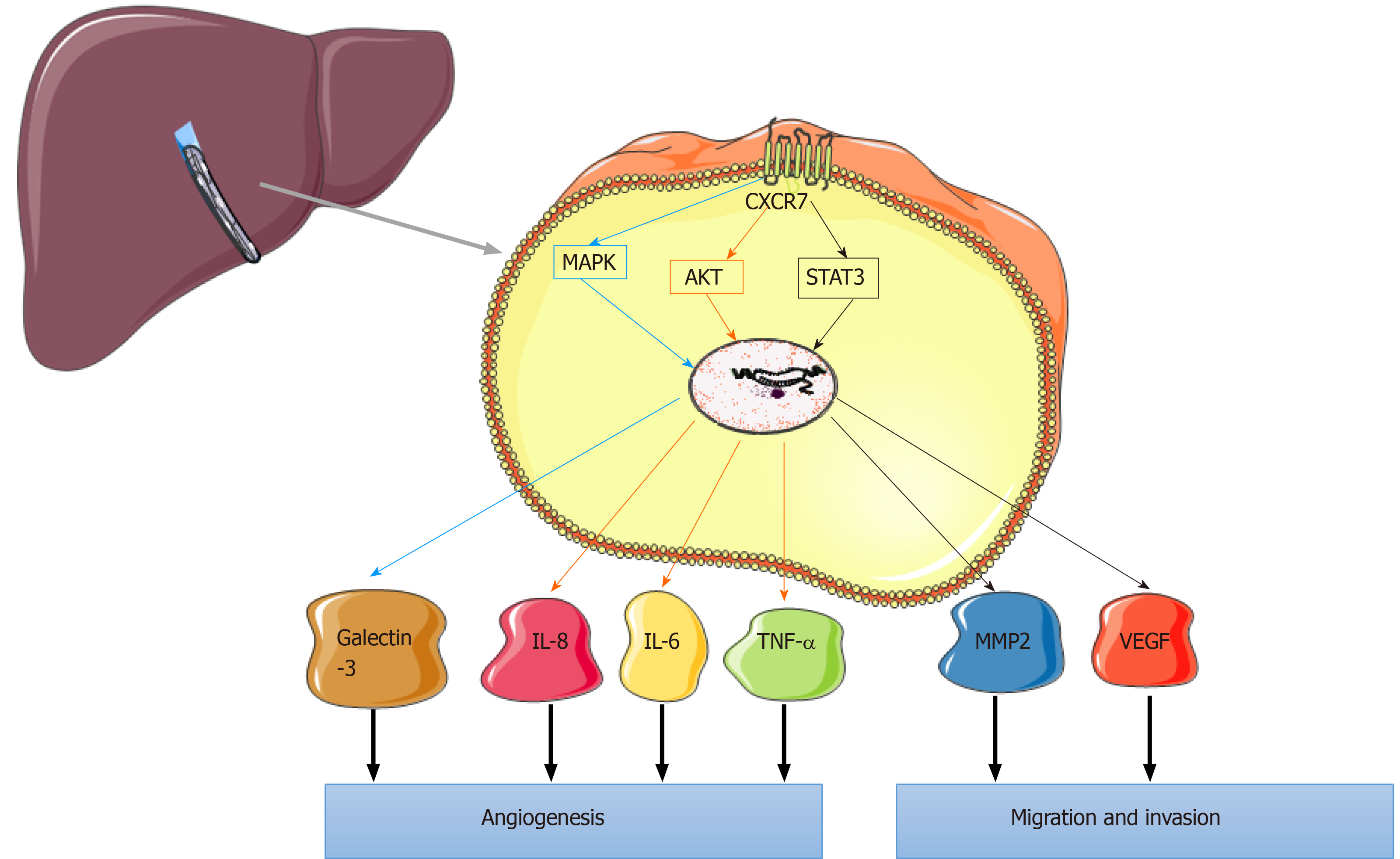Copyright
©The Author(s) 2020.
World J Clin Cases. Jun 26, 2020; 8(12): 2448-2463
Published online Jun 26, 2020. doi: 10.12998/wjcc.v8.i12.2448
Published online Jun 26, 2020. doi: 10.12998/wjcc.v8.i12.2448
Figure 3 Mechanism of chemokine (C-X-C motif) receptor 7 in angiogenesis of hepatocellular carcinoma.
Chemokine (C-X-C motif) receptor 7 (CXCR7) activation promotes angiogenesis by regulating vascular endothelial growth factor and galectin-3 in hepatocellular carcinoma via the mitogen-activated protein kinases signaling pathway. This process occurs through activating the also known as Protein Kinase B signaling pathway, and the expression of also known as Protein Kinase B target proteins, including human tumor necrosis factor-alpha, interleukin-6, and interleukin-8, is also induced by CXCR7; CXCR7 can promote tumor endothelial cells migration and invasion in hepatocellular carcinomas by phosphorylated serial advanced technology attachment 3 at Tyr705 to influence the signaling pathway and its downstream genes matrix metalloproteinase 2 and vascular endothelial growth factor. CXCR7: Chemokine (C-X-C motif) receptor 7; VEGF: Vascular endothelial growth factor; MAPK: Mitogen-activated protein kinases; Akt: Also known as Protein Kinase B, PKB; TNFα: Human tumor necrosis factor-alpha; IL-6: Interleukin-6; IL-8: Interleukin-8; TEC: Tumor endothelial cells; STAT3: Serial advanced technology attachment 3; MMP-2: Matrix metalloproteinase 2; VEGF: Vascular endothelial growth factor.
- Citation: Xin Q, Sun Q, Zhang CS, Zhang Q, Li CJ. Functions and mechanisms of chemokine receptor 7 in tumors of the digestive system. World J Clin Cases 2020; 8(12): 2448-2463
- URL: https://www.wjgnet.com/2307-8960/full/v8/i12/2448.htm
- DOI: https://dx.doi.org/10.12998/wjcc.v8.i12.2448









